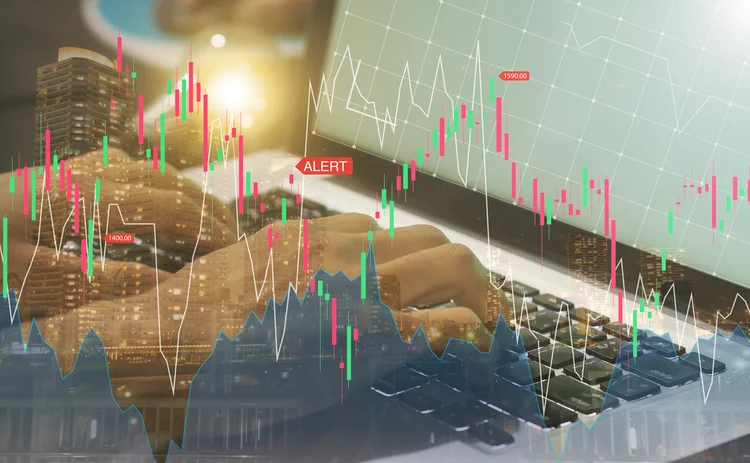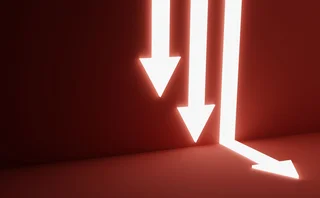
Curbing rogue behaviour
Regulators should try to combat rogue trading by measuring traders’ risk-taking differently, say quants

When it comes to setting risk limits for traders, standard measures such as value-at-risk and expected shortfall (ES) are not a sufficient check to curb the behaviour of rogue individuals.
We examined this problem in a previous article on Risk.net, and proposed the adoption of utility theory and related tools that have been researched by academics (Basak and Shapiro, 2001) but have often been ignored by quantitative finance practitioners. We should define what we mean by a rogue trader. We model a rogue trader as someone who acts to maximise their expected utility. Their utility is assumed to be a function of the profit or loss of their financial position at the end of the trade. This definition may be adopted more generally for investors. We assume the trader likes making money, so their utility goes up as profits go up.
However, importantly, we assume a rogue trader is not risk-averse. A risk-averse individual has a classic increasing concave utility. If we plot a graph of their utility against their final position, for example, it will slope upwards, but the curve becomes less and less steep as the amount of money made increases, and more and more steep as the amount of money lost increases. Losses worry the individual more than gains excite them.
By contrast, a rogue trader has an S-shaped utility curve. They are not particularly concerned about losing a large amount of money. Typically, this is because they have some form of limited liability, so no matter how badly their trade performs, once they have lost their job and their reputation, the size of the loss beyond that point will matter little and utility will be less and less steep in that direction.
In Nobel Prize-winning research, the experimental psychologists Daniel Kahneman and Amos Tversky (Kahneman and Tversky, 1979) showed most individuals behave as though they have S-shaped utility curves. In addition, since financial institutions such as banks are owned by shareholders who have limited liability, the ‘utility curve of a bank’ will also be S-shaped. S-shaped utility curves provide a model for rogue traders and rogue institutions, which can be backed up by empirical evidence.
Under this model, we wonder how a rogue trader would behave in order to maximise their utility if they were forced to abide by either VAR or ES risk limits. Studying the related portfolio optimisation problem, we found they could trade in digital options in such a way as to generate a position that made them a huge profit in more and more likely profit scenarios but which would lead to catastrophic losses in less and less likely loss scenarios.
Daniel Kahneman and Amos Tversky showed most individuals behave as though they have S-shaped utility curves
In particular, in the standard model for stock markets, the Black-Scholes model, there would be no limit on the expected utility a rogue trader could achieve. To put it bluntly, a rogue trader couldn’t care less if you imposed VAR or ES constraints.
So what limits should a regulator impose if they wish to control rogue traders? One simple option is to measure the risk a trader takes using a different expected utility for wider society. This utility for wider society would be given by a risk-averse curve, with a classic concave utility function where larger and larger losses would be given an increasingly greater weight as explained above. Considering again the related portfolio optimisation problem, in our work we showed that a typical rogue trader would feel the effect of limits set in this way and the maximum utility they can achieve will be reduced (Armstrong and Brigo, 2017 & 2018).
This is an example of the benefits of expanding our quantitative finance arsenal in the direction we recommended in the February column. Including utility analysis techniques, and S-shaped utility in particular, we find the industry standard risk measures VAR and ES are not sufficient to curb rogue traders. Alternatives such as expected concave utilities could be employed instead.
Damiano Brigo is head of the mathematical finance research group at Imperial College, London and John Armstrong is a senior lecturer at King’s College London
References
- Basak S and A Shapiro, 2001
Value-at-Risk based risk management: optimal policies and asset prices
Review of Financial Studies 14, pages 371–405
- Kahneman D and A Tversky, 1979
Prospect theory: an analysis of decision under risk
Econometrica: Journal of the econometric society,
pages 263–291
- Armstrong J and D Brigo, 2017
Optimising S-shaped utility and implicationsfor risk management
arXiv, available at https://arxiv.org/abs/1711.00443
- Armstrong J and D Brigo, 2018
Rogue traders vs VAR and expected shortfall
Risk April, pages 78–82
Only users who have a paid subscription or are part of a corporate subscription are able to print or copy content.
To access these options, along with all other subscription benefits, please contact info@risk.net or view our subscription options here: http://subscriptions.risk.net/subscribe
You are currently unable to print this content. Please contact info@risk.net to find out more.
You are currently unable to copy this content. Please contact info@risk.net to find out more.
Copyright Infopro Digital Limited. All rights reserved.
As outlined in our terms and conditions, https://www.infopro-digital.com/terms-and-conditions/subscriptions/ (point 2.4), printing is limited to a single copy.
If you would like to purchase additional rights please email info@risk.net
Copyright Infopro Digital Limited. All rights reserved.
You may share this content using our article tools. As outlined in our terms and conditions, https://www.infopro-digital.com/terms-and-conditions/subscriptions/ (clause 2.4), an Authorised User may only make one copy of the materials for their own personal use. You must also comply with the restrictions in clause 2.5.
If you would like to purchase additional rights please email info@risk.net
More on Comment
An AI-first approach to model risk management
Firms must define their AI risk appetite before trying to manage or model it, says Christophe Rougeaux
Op risk data: At Trafigura, a $1 billion miss in Mongolia
Also: Insurance cartels, Santander settlement and TSB’s “woeful” customer treatment. Data by ORX News
UST repo clearing: considerations for ‘done-away’ implementation
Citi’s Mariam Rafi sets out the drivers for sponsored and agent clearing of Treasury repo and reverse repo
Op risk data: Macquarie mauled by securities mismarks
Also: Danske’s costliest branch, tedious times for TD, and WhatsApp won’t stop. Data by ORX News
Climate stress tests are cold comfort for banks
Flaws in regulators’ methodology for gauging financial impact of climate change undermine transition efforts, argues modelling expert
Op risk data: Shady loans robbing Reliance of $1.1bn
Also: H20’s less-than-liquid holdings, Ripple ripped for $125m, and more WhatsApp slaps expected. Data by ORX News
FX algo users change tack to navigate market doldrums
BestX data finds traders ditching TWAP in favour of more opportunistic execution styles
Op risk data: Payday lender Skytrail sees $1.4bn disappear
Also: Cartel claims cost European bond dealers dearly, plus oil price gouging and crypto cover-ups. Data by ORX News







